
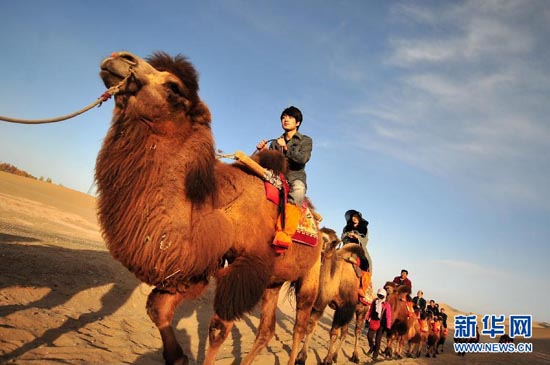 |
The prosperity of the Mogao Grottoes was linked to the importance of Dunhuang City. The oasis city became a metropolis on the ancient Silk Road, commanding a strategic position between central China and the route to the west.
Merchants, monks and military forces from different nations made their homes there, creating a melting pot of cultures.
Initially, the caves dug into the cliff faces were created by monks to serve as places for meditation. Sculptures and murals were visual representations illuminating Buddhist beliefs and parables, as the monks were dedicated to promoting Buddhism in China.
As Dunhuang's prosperity grew and Buddhism became established, increasingly caves were sponsored by local people, ruling elites, temples and even Chinese emperors. These were intended as places of worship and pilgrimage for the public.
The Mogao Grottoes reached their zenith during the Tang Dynasty (AD 618-907), when Dunhuang became the main hub of commerce along the Silk Road and a major center for Buddhism, by now it became the dominant religion in China. A large number of caves were created during this time.
Later on, during the Ming Dynasty (AD 1368-1644), the development of sea transport saw the old Silk Road linking Asia and Europe gradually abandoned, traces of its civilizations succumbing to the desert sands.
The millennia-long construction of the Mogao Grottoes was almost forgotten by the outside world, the site only used by local people for worship.
That was until the beginning of the 20th century saw a revival of interest in the ancient Silk Road.
It is now difficult to imagine Dunhuang's ancient glory days, but the Mogao Grottoes bear silent witness to the flourishing cultural exchanges of a long-gone past, embodying some of the highest artistic accomplishments in sculpture and mural painting the world has ever seen.
The 735 caves contain 45,000 square meters of murals and more than 2,400 sculptures. The complex forms the biggest ancient art gallery in China and one of the largest, best-preserved and most significant Buddhist art sites in the world.



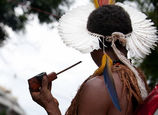


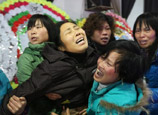


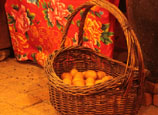
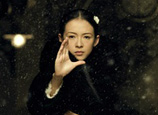






 Railway staff members express Spring Festival greetings
Railway staff members express Spring Festival greetings


![]()
